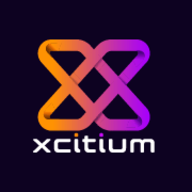

Find out what your peers are saying about CrowdStrike, SentinelOne, Microsoft and others in Endpoint Detection and Response (EDR).


Microsoft Defender for Endpoint is a comprehensive security solution that provides advanced threat protection for organizations. It offers real-time protection against various types of cyber threats, including malware, viruses, ransomware, and phishing attacks.
With its powerful machine-learning capabilities, it can detect and block sophisticated attacks before they can cause any harm. The solution also includes endpoint detection and response (EDR) capabilities, allowing organizations to quickly investigate and respond to security incidents. It provides detailed insights into the attack timeline, enabling security teams to understand the scope and impact of an incident.
Microsoft Defender for Endpoint also offers proactive threat hunting, allowing organizations to proactively search for and identify potential threats within their network. It integrates seamlessly with other Microsoft security solutions, such as Microsoft Defender XDR, to provide a unified and holistic security approach. With its centralized management console, organizations can easily deploy, configure, and monitor the security solution across their entire network.
Microsoft Defender for Endpoint is a robust and scalable security solution that helps organizations protect their endpoints and data from evolving cyber threats.
Open EDR is a robust solution for real-time threat detection, monitoring, and response. Known for its effective identification of security breaches, it offers valuable insights for endpoint protection.
Open EDR provides comprehensive security coverage by ensuring endpoint protection across multiple devices. Its key strengths lie in automated response features and seamless integration with existing IT infrastructure. Users value its ability to deliver centralized visibility into network activities, customizable alerts, and detailed forensic analysis. Despite its powerful capabilities, some users report occasional system crashes and note that the setup process can be complex. Improvements in customer support, documentation, and resource management could enhance its overall performance.
What are the key features of Open EDR?Open EDR is highly valued in industries requiring stringent security measures, such as financial services and healthcare. Its comprehensive endpoint protection and automated response capabilities ensure critical assets remain secure, meeting the unique demands of these sectors.
We monitor all Endpoint Detection and Response (EDR) reviews to prevent fraudulent reviews and keep review quality high. We do not post reviews by company employees or direct competitors. We validate each review for authenticity via cross-reference with LinkedIn, and personal follow-up with the reviewer when necessary.